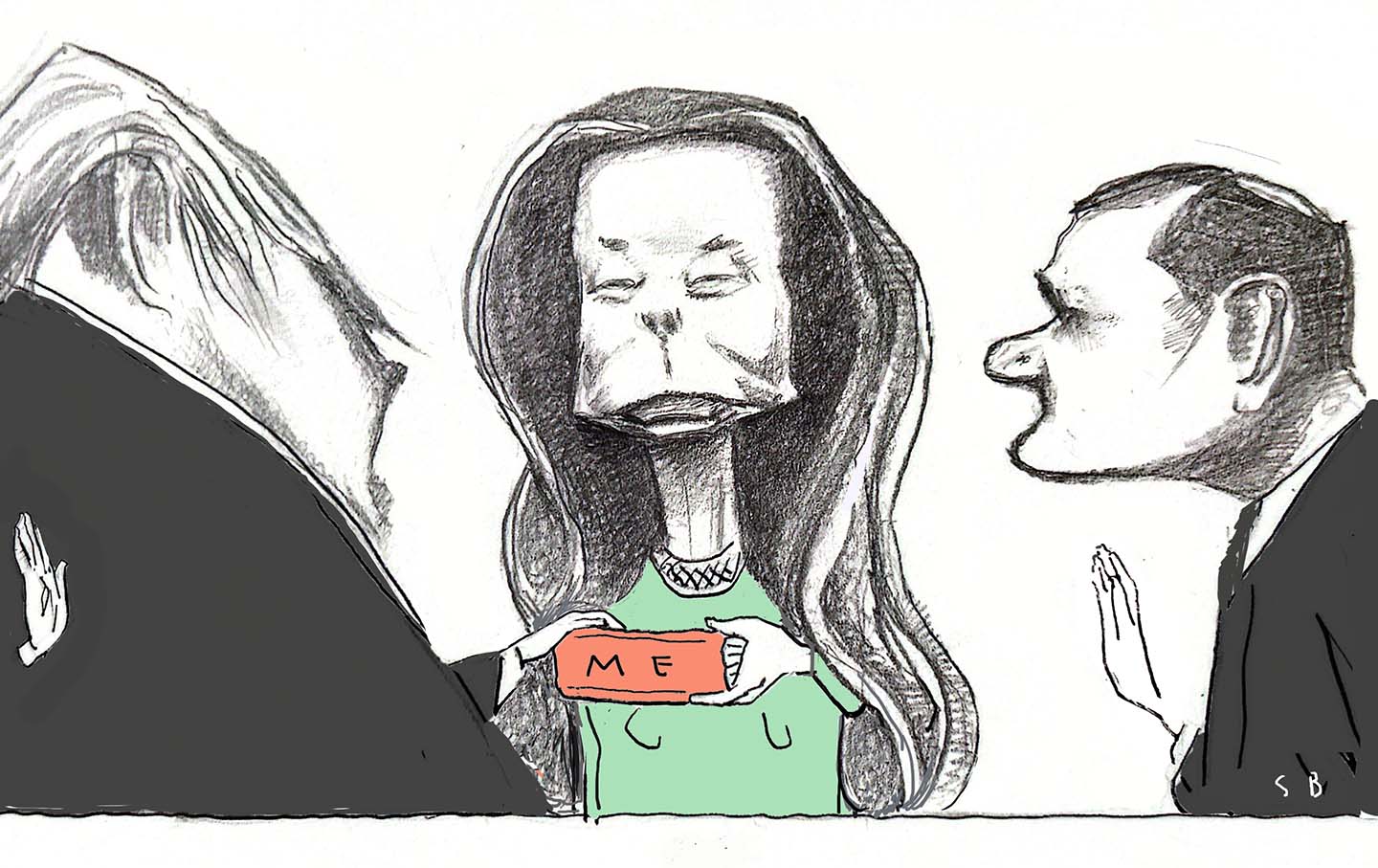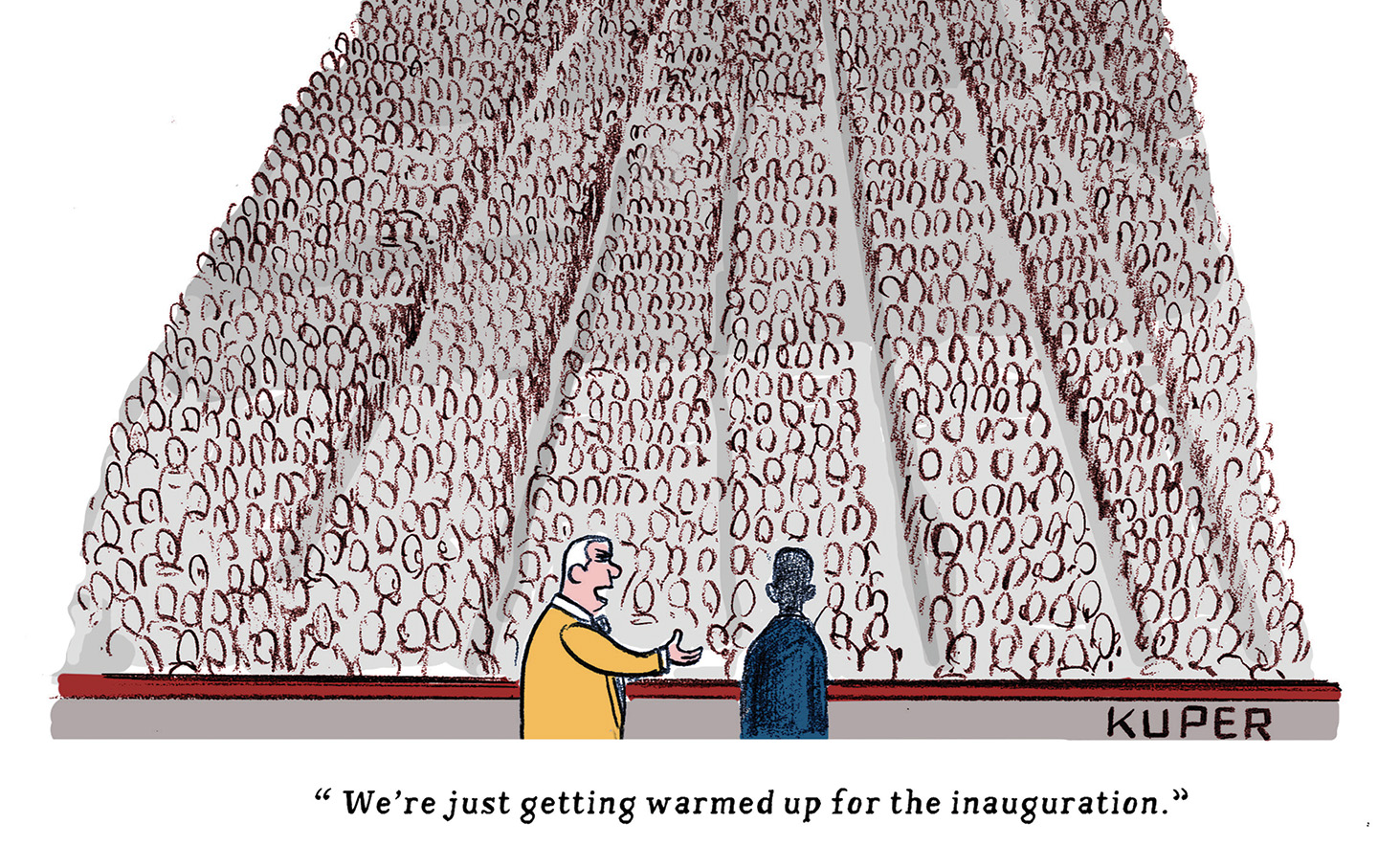Was the Collapse of US-Russia Relations Inevitable?
How US hubris and Russian paranoia undermined partnership.

Russia’s full-scale invasion of Ukraine has sunk US-Russia relations to the lowest levels since the darkest days of the Cold War. No easing of tensions is looming on the horizon. Quite the contrary: The two countries appear to be locked in a downward spiral—centered on Ukraine but affecting all aspects of their relations—that could suddenly bring them to the verge of a direct military confrontation, with all the risk of a nuclear cataclysm that entails.
The prevailing Western view is that Russian President Vladimir Putin bears full responsibility for this perilous state of affairs. Observers have identified the landmarks during the past 20-plus years that, they insist, unmistakably revealed Putin’s intentions but were downplayed by Western governments at the time: his flagrant interference in Ukraine’s presidential elections in 2004, the subsequent crackdown on foreign-funded civic associations in Russia, the cyberattacks on Estonia in 2007, the war against Georgia in 2008, the first invasion of Ukraine in 2014, the incursion in Syria to support a brutal dictator in 2015, and the escalating rhetorical attacks on Western liberalism in recent years. Only firm resistance to Putin’s aggressive acts as they occurred, many commentators have argued, could have stopped him, altered the trajectory of US-Russia relations, and averted tragedy.
Though this argument has merit, the matter is more complex. The argument assumes that when Putin ascended to power a generation ago, he resolved to resurrect Russia as a great power by upsetting the post–Cold War status quo in Europe and challenging the United States across a broad front. Yet it’s possible that if Washington had made different choices—on European security, democracy promotion, and counterterrorism, for example—it could have shaped his goals in ways more favorable to American interests rather than provoking him to embark on an anti-American course that he initially had no intention of taking. This, then, is the question: Have the past 20-plus years witnessed the inexorable unfolding of Putin’s strategic design, or the pernicious interplay of US and Russian choices?
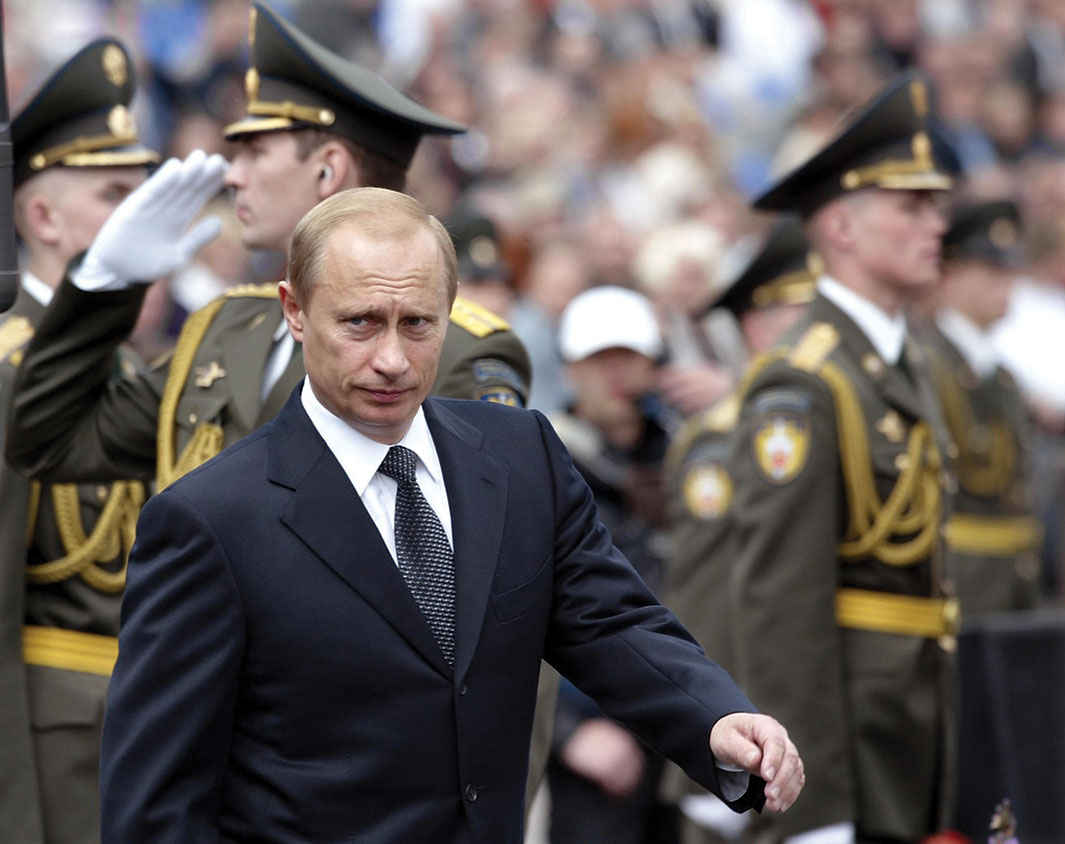
Putin did indeed come to office determined to restore Russia as a great power. As he wrote in a manifesto that appeared on the eve of his ascendance, Russia faced, for the first time in the last 200 to 300 years, the real prospect of falling into the second or even the third rank of global powers. He called on the country to mount a concerted effort to avoid that fate. His plan was to do that not in opposition to the United States, however, but in partnership with it. Close ties with the world’s preeminent power, he was convinced, would validate Russia’s own worth.
Putin’s initial hopes thus presented the George W. Bush administration with an opportunity to put US-Russia relations on an enduring, constructive track. I saw that firsthand as the president’s senior Russia expert on the staff of the National Security Council from June 2002 to February 2007. Russia’s economic recovery and the restoration of order in Putin’s early years as president made genuine partnership plausible for the first time since the end of the Cold War. During the George H.W. Bush and Clinton administrations, Russia had been in the midst of a profound, systemic crisis and was in no position to play much of a role on the global stage. Now Russia had resources to bring to the table.
Early on, Bush’s engagement with Putin showed promise, especially after the Russian president offered support in the wake of the terrorist attacks of September 11, 2001. Russia made a small but significant contribution to the swift US overthrow of the Taliban regime in Afghanistan and the dispersal of Al Qaeda forces there in the fall of 2001. Putin helped facilitate the United States’ establishment of military bases in Central Asia to prosecute the war and permitted the US to transport loosely defined “humanitarian aid” through Russian airspace. Russia’s security services provided valuable intelligence on conditions in Afghanistan.
At the Moscow/St. Petersburg summit in May 2002, Bush and Putin issued a joint declaration that laid out a framework for strategic partnership. The two sides pledged to cooperate on counterterrorism, the nonproliferation of weapons of mass destruction, drug trafficking, transnational organized crime, the Middle East peace process and other regional conflicts, missile defense, and nuclear arms control. They spoke of increased trade and investment and expanded people-to-people contacts as the foundation for long-term constructive relations. They set up a group that would consult on strategic security and pledged to develop a new relationship between NATO and Russia.
High-level engagement produced positive results for both countries. Cooperation on counterterrorism and nonproliferation deepened, including joint efforts to rein in Iran’s and North Korea’s nuclear ambitions. The US and Russia signed the Moscow Treaty in May 2002, committing to reduce in a decade their numbers of deployed strategic nuclear warheads by nearly two-thirds, and they managed with little rancor the US withdrawal from the Anti-Ballistic Missile Treaty the following month. Even Putin’s opposition to the US invasion of Iraq did not significantly stress relations. Whatever objections he might have had, Putin still saw close ties with the United States as essential to his ambition to rebuild his country’s economy and reassert its role in world affairs.
Yet despite this promising start, the state of US-Russia relations was trending downward as Bush approached his second inauguration in January 2005. The rift become undeniable after Putin castigated the United States for its unipolar ambitions and disregard of Russia’s interests at the Munich Security Conference in February 2007. What had gone wrong?
Commentators who do not put the onus for this deterioration squarely on Putin and who fault, to some degree, the United States generally point to the US decision to expand NATO into former Warsaw Pact countries as the original sin. This position has been most insistently defended by the American political scientist John Mearsheimer. A self-identified realist in the area of international relations, Mearsheimer contends that no great power would tolerate the presence of a hostile military bloc near its borders—and the Western mantra that NATO is a purely defensive alliance notwithstanding, the Kremlin clearly saw the alliance as a Cold War relic inherently hostile to Russia.
That might make sense in theory, and certainly Putin’s recent fulminations against the West lend credence to that view. But the reality is quite different. Russia responded to the first two post–Cold War waves of NATO expansion, in 1999 and 2004, with relative equanimity. Washington’s commitment, codified in the NATO-Russia Founding Act of 1997, not to deploy nuclear weapons or to station permanent substantial combat forces in the new member states mollified Moscow. So did the creation of NATO-Russia forums, which gave Russia greater insight into the alliance’s thinking and operations but not, as Washington incessantly stressed, a veto. In March 2000, Putin himself even raised the possibility of Russia’s joining NATO if the Western alliance agreed to treat it “as an equal partner,” adding that it was hard to see NATO as an enemy.
Admittedly, there was tension between NATO and Russia, and the various forums did not produce much joint work, in large part because of lingering mutual mistrust. Nevertheless, Putin was prepared to live with the alliance—at least until the US pushed for membership for Ukraine and Georgia at the 2008 NATO summit in Bucharest. That proposal crossed a bright red line, threatening Russia’s preeminence in two states that it considered critical to its own security and, in the case of Ukraine, its very essence as a great power. And it points to the decisive factor behind the deterioration in relations: Washington’s progressive encroachment on Russia’s interests in the former Soviet Union.
Popular
“swipe left below to view more authors”Swipe →That region, which Russian leaders had spent centuries assembling under their rule at great sacrifice, was, in the Kremlin’s view, the foundation of Russia’s geopolitical heft and therefore its great-power status. Even as the Soviet Union was disintegrating, the Kremlin sought to counter centrifugal forces, stem the erosion of Russian influence, and create the basis for a reassertion of its prerogatives as the country recovered from the systemic crisis that had shattered the Soviet Union and then wracked Russia in the 1990s. That is why it created institutions to undergird a continuing presence in the erstwhile Soviet states, such as the Commonwealth of Independent States and the Collective Security Treaty, and declared that it had an obligation to protect ethnic Russians and Russian speakers, now deemed compatriots, strewn across the former USSR. How then could the Kremlin be anything but alarmed by Washington’s rising profile in its neighborhood?
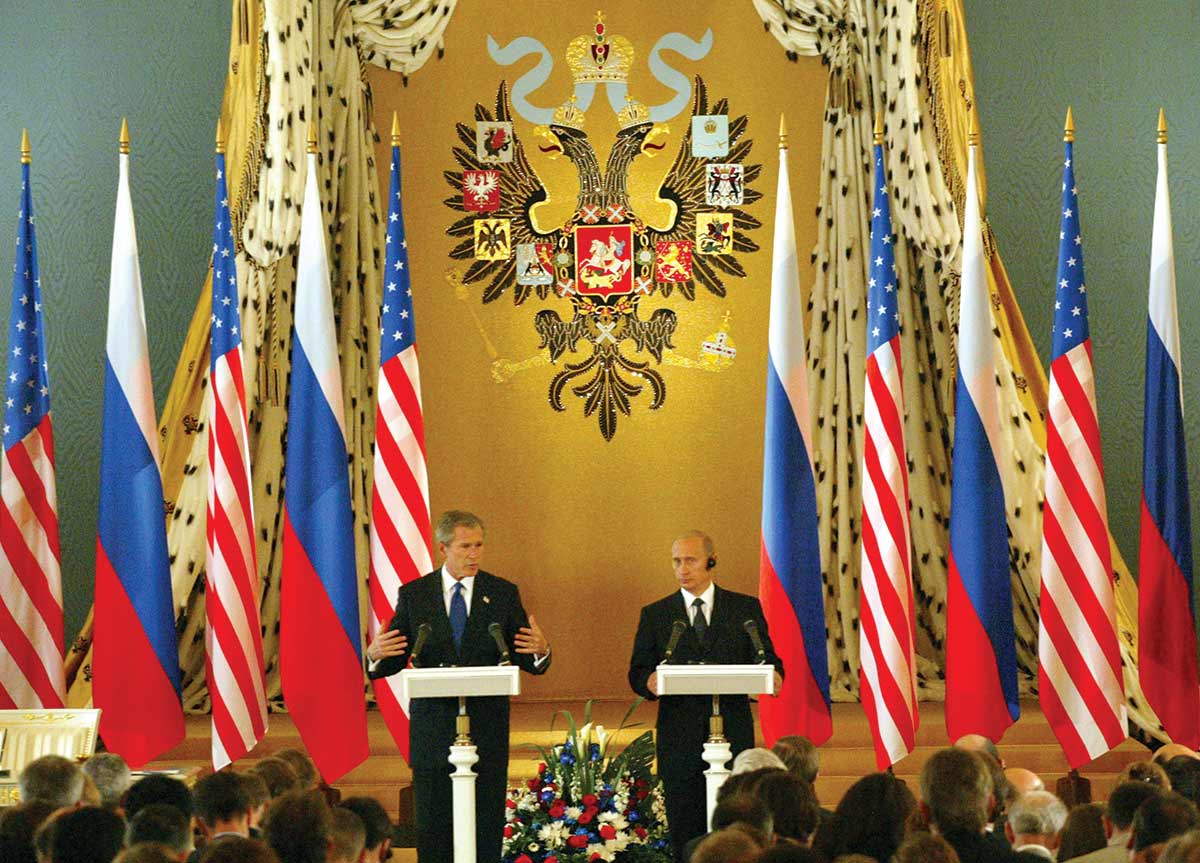
The United States, meanwhile, looked askance at any reassertion of Russian influence, which it believed risked re-creating a threat of Soviet dimensions. It much preferred Eurasian geopolitical pluralism. For that reason, the United States had been quick to support the independence of the former Soviet states in the wake of the Soviet collapse. But it wasn’t until the George W. Bush administration that the US began to vigorously counter Russian influence and assert its own authority in the region. It might seem ironic that Bush was pushing harder just as Putin sought to build a closer relationship with the United States on the basis of a common struggle against international terrorism. But it isn’t, for Putin hoped that closer ties would persuade Washington to recognize, at least implicitly, a Russian sphere of influence in the former Soviet Union, and spheres of influence were decidedly out of favor in Washington.
For that reason, the Bush administration was not going to leave Russia unchallenged to reassert its authority in the former Soviet Union, no matter what contribution it might make to the common counterterrorist campaign. If anything, the administration redoubled its efforts to limit Russia’s influence beyond its borders.
For example, it stepped up the effort launched by the Clinton administration to promote the construction of oil and gas pipelines out of the Caspian Basin that would bring energy to European markets without having to go through Russia. Not only would that diminish Russia’s hold over the continent’s energy supplies; it would also bolster the independence of the former Soviet states, which would receive revenue streams that Moscow could no longer manipulate.
The Bush administration also backed the GUAM (Georgia, Ukraine, Azerbaijan, Moldova) regional organization as a counterweight to the Russia-dominated Collective Security Treaty Organization (CSTO). After Moscow developed a plan that would have regulated the Transnistrian conflict, with provisions for a modest Russian military contingent in that region, Washington pressured the Moldovan president into rejecting it as an excessive constraint on his country’s sovereignty.
Although Washington had told the Kremlin that the US military presence in Central Asia would be temporary and would end after it had dealt with the urgent situation in Afghanistan (the United States’ initial estimate of two years indicates how greatly it had misread the situation), it quickly became clear that the United States intended to stay for the long term. The US presence was deemed critical to its overall counterterrorist strategy, part of a network of “lily pads”—military bases spread across the broader Middle East and elsewhere—meant to enhance American flexibility and reach as the war in Afghanistan morphed into a grander global war on terrorism. The bases also bolstered the American presence in a resource-rich region and provided locations for closer intelligence reconnaissance of China’s western reaches.
These policies strained US-Russia relations but did not lead Putin to doubt the value of partnership. Two dramatic events in 2004, however, caused him to change his mind: the Beslan school terrorist attack and the Orange Revolution in Ukraine.
On September 1, the opening day of the academic year in Russia—a festive occasion across the country—a band of Caucasian terrorists seized the school in Beslan, a small town in the North Caucasus. Hundreds were taken hostage. After a nearly three-day standoff, Russian forces stormed the school. More than 300 people, including 186 children, died. It was a national tragedy: the country’s 9/11, in the view of many Russians. Despite Bush’s condolences, Putin saw the attack as evidence that Washington was using counterterrorism as a smoke screen to conceal actions that were intended to undermine Russia’s territorial integrity. That the US had recently granted a representative of the rebel Chechen government-in-exile political asylum, despite explicit warnings from Moscow that Putin would see this as a hostile act directed at him personally, only reinforced his conviction. Shortly after the attack, Putin warned that some countries wanted to tear away a “juicy” piece of Russia, convinced that Russia—“one of the greatest nuclear powers in the world”—posed a threat. Terrorism was simply a tool for achieving that goal. No one doubted he had the United States in mind.
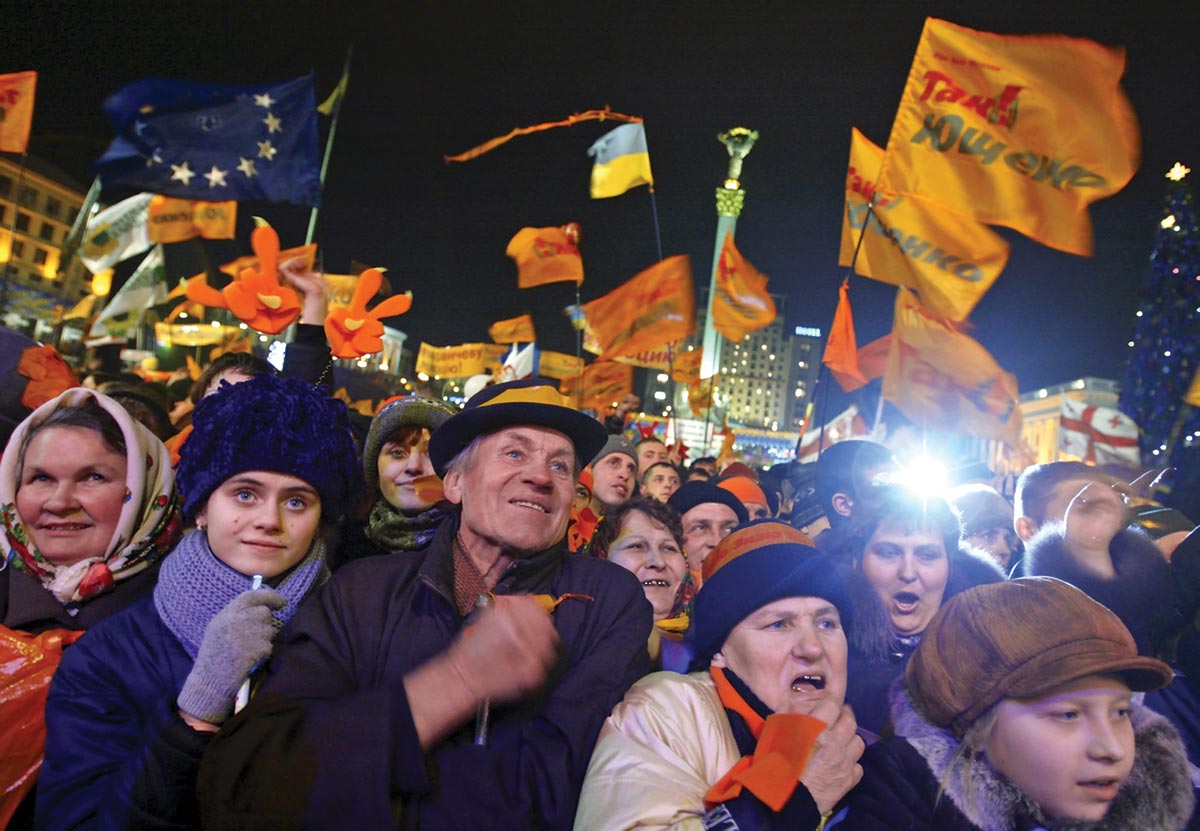
Then, in November, came the so-called Orange Revolution. Washington backed protesters in Ukraine who charged that its presidential elections had been rigged to put in office the candidate that Russia, and Putin personally, favored. Under intense public and Western pressure, the Ukrainian government relented and agreed to rerun the second round of elections. This time, the pro-Western candidate won a solid victory. Putin did not see this rerun as a free and fair election. Rather, he was convinced that the United States had skillfully executed a regime-change operation with the goal of ripping Ukraine out of Russia’s political orbit. US democracy promotion, he concluded, was little more than a cynical ploy to advance Washington’s geopolitical interests at Russia’s expense. Because the United States was actively promoting democracy in Russia, he also feared that the Orange Revolution was a dress rehearsal for regime change in Russia itself in connection with the upcoming Duma elections in 2007 and presidential elections in 2008.
Related Article
To be sure, Beslan and the Orange Revolution were hardly part of a strategic plan hatched in Washington to undermine Russia; the Bush administration was probably more surprised by them than the Kremlin was. Both were indigenous in origin and reactions to Russian policy. Beslan was part of a larger Chechen nationalist struggle for independence from Russia’s brutal imperial policies extending back to the mid-19th century, while the Orange Revolution aimed to overturn the results of an election in which Moscow had shamelessly interfered.
Such nuances made little difference to the Kremlin. What it knew was that the United States had offered little support in the Kremlin’s struggle against what it saw as Chechen terrorists—in Russian doctrine, separatism, extremism, and terrorism were all aspects of the same phenomenon. Washington had even urged the Kremlin to negotiate with “moderate” Chechens, who the US believed had legitimate grievances. And similarly in the case of Ukraine, the Kremlin knew that Washington had funded training programs in democratic politics and organizational tactics for civic organizations, which then played a prominent role in overturning the results of an election that Moscow considered legitimate.
Moreover, Russian leaders did not believe that Chechen rebels and Ukrainian activists had true agency; in world affairs, only great powers counted. And so, according to the Kremlin’s dubious logic, Beslan and the Orange Revolution, seen against the background of mounting US activism in the former Soviet bloc, revealed the United States’ ultimate goals vis-à-vis Russia: its eviction from the other former Soviet states, the erosion of its territorial integrity, and regime change—in short, its demise as a great power. Putin’s security service laid this conclusion squarely before him and urged him to push back. Putin needed little persuasion. He changed course.
Evidence of this new course surfaced quickly. Starting in 2005, Putin used windfall revenues from soaring oil prices to pay off Russia’s sovereign debt to the IMF, and then to the Paris Club in 2006. That freed the Kremlin from the West’s economic tutelage, enabling it to counter US initiatives more aggressively.
Domestically, Putin made sure there would be no Russian “color revolution.” He cracked down hard on foreign-funded civic organizations. He tightened control over the media and the political system, narrowing the space for Western-leaning and nonindigenous political forces. He changed the electoral law to mandate that all Duma deputies be elected by party lists, which effectively ensured that only Kremlin-approved parties would gain representation in the 2007 parliamentary elections. He green-lighted the Kremlin’s sponsorship of youth movements, which could provide the street muscle to overwhelm any forces that dared to protest electoral results as fraudulent, a critical first step in the color revolution playbook.
In the former Soviet bloc, the Kremlin launched a vigorous disinformation campaign to discredit the United States, especially in Central Asia, where the US had two military bases. In 2005, Russia prodded the Shanghai Cooperation Organization to issue a declaration calling on non-regional powers—i.e., the United States—to set final timelines for the withdrawal of their military forces from Central Asia, and it applauded the Uzbek government’s decision to expel the US from a military base after Washington refused to denounce a partially violent protest movement in Uzbekistan’s Fergana Valley that Tashkent thought was aimed at ousting the government. Meanwhile, the Kremlin curtailed its subsidies of gas exports to Ukraine and briefly cut off exports when Kyiv balked at the higher rates. It also used cutoffs or threats of cutoffs in energy supplies to discipline governments in Georgia and Belarus. And in 2008, Russia invaded Georgia, in large part to derail its NATO ambitions and to show that (Washington’s boasts notwithstanding) it did indeed have a veto over NATO decisions, in the guise of the use of force.
In the face of these actions, Bush administration officials lamented that US-Russian competition in the former Soviet Union was poisoning the entire relationship. They failed to acknowledge that they might have played a role in unbottling the poison. To be sure, Putin overreacted, conjuring up conspiracies and threats far beyond anything Washington intended or was capable of. But the key point is that he was reacting. He was not driving events; the United States, by far the superior power, was.
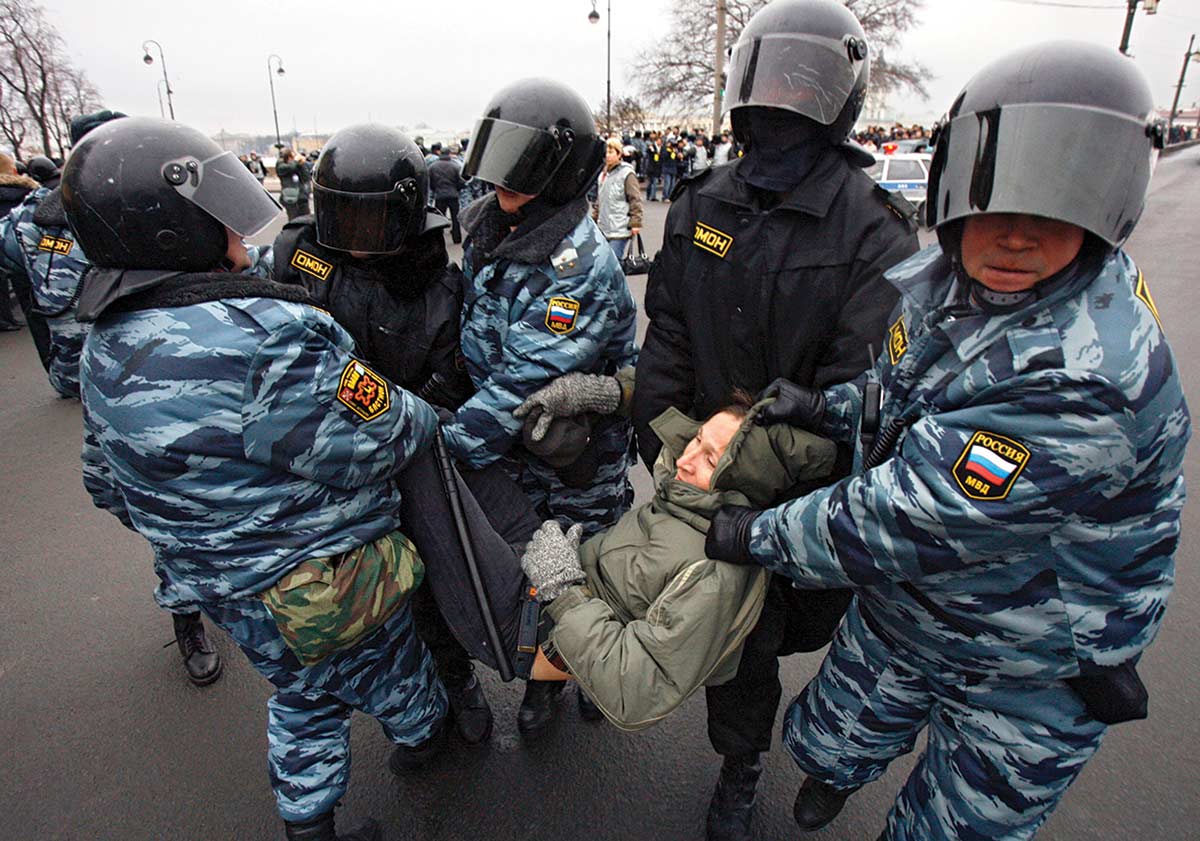
Did Washington have other options that would have done less damage to relations without compromising American interests or principles? Could it have broken through the Kremlin’s conspiratorial, paranoid mindset to allay its fears of what the US was up to in the former Soviet Union? This is a matter of conjecture; as the Russians like to say, history does not tolerate a subjunctive mood. But, arguably, there was another path—one that did not entail Washington’s recognizing the sphere of influence Putin sought but that nonetheless could have eased the Kremlin’s fears that the US goal was to drive it out of the former Soviet Union and replace it with a more pliable regime. Bush officials were well aware of the alternative. But in internal debates, the harder line nearly always prevailed.
To start, while the United States was right to hedge against the return of an authoritarian, expansionist Russia, there was no need to proceed as vigorously as the Bush administration did. Russia remained a weak power. Despite an incipient recovery, it posed no conceivable near- or medium-term threat, certainly not in the former Soviet Union. Moreover, developments in that region were objectively moving in the United States’ direction and eroding the Kremlin’s influence, as nationalist governments sought greater independence from Russia and globalization encouraged their political and economic integration into surrounding regions. There was no pressing need to intervene to accelerate the pace. Rather, the United States could have focused on building more constructive relations with Russia—which was also Putin’s initial goal—and it could have given Russia time to adjust to its new geopolitical circumstances.
Related Article
Adjustments in policy would have helped, too. Washington needed to eliminate the gaping inconsistency between its overall counterterrorism policy and its stance on Chechnya. After 9/11, Bush had given the world a binary choice: You are either with us or with the terrorists. But Washington made an exception for the Chechen rebels, many of whom were not, to be sure, terrorists but were nevertheless cooperating with terrorist groups in their struggle against Moscow. Washington could have prevented representatives of the Chechen government-in-exile from operating freely in the United States. It could have pressed moderates among the Chechen rebels to cut their ties to known terrorist organizations. Such steps would have laid a firmer foundation for long-term counterterrorism cooperation and debunked the view that Washington was using terrorism as a tool against Russia.
With regard to its Ukraine policy, Washington could have acted in ways that defused the rivalry over its geopolitical orientation by fostering productive economic ties between Ukraine and both Europe and Russia, and by explicitly supporting some form of neutrality for Ukraine. While it focused on assisting democratic and economic reform in Ukraine, it could have ratcheted down its democracy promotion programs in Russia, which were of marginal value but raised fears in the Kremlin that Washington was seeking to erode the regime’s domestic position, especially as Washington began to decry Russian backsliding on democracy.
In addition, Washington could have recognized organizations formed by the former Soviet states, even if they were dominated by Moscow. In particular, it could have encouraged ties between NATO and the CSTO, which could have been used to legitimate NATO’s military presence in Central Asia and to ease concerns about US goals in the region by giving Moscow more insight into the logic and conduct of US operations.
Finally, in light of the growing problems with Russia in the former Soviet bloc, the US push in 2008 to bring Georgia and Ukraine into NATO was ill-advised at best. It tied together the two strands of the Bush administration’s hedging policy—NATO expansion and Eurasian geopolitical pluralism—in a way guaranteed to provoke a powerful Russian backlash. Key allies, notably France and Germany, were adamantly opposed. Bush’s own ambassador in Moscow warned that extending an invitation to Ukraine would cross the “brightest of red lines” and elicit sharp condemnation across the political spectrum. The ultimate compromise at the 2008 NATO summit—promising future membership to both countries without laying out a concrete path to that goal—was the worst of all possible worlds: It disappointed the Georgians and Ukrainians while angering the Russians, who were dead set against membership for either. By contrast, dropping the matter might have averted Russia’s war against Georgia.
There was, then, a plausible alternative that arguably could have produced less contentious relations with Russia without compromising US interests or principles. It would have required Washington to pursue its goals in the former Soviet Union less aggressively, with greater respect for Russia’s interests and sensitivity to the vulnerabilities that led to the Kremlin’s overreacting to US policies. A more deliberate approach by Washington would have given the Kremlin time to adjust to the changing geopolitical realities in its neighborhood, including a growing American presence.
Admittedly, a less assertive approach would not have removed the former Soviet Union as a zone of competition. The long-standing US mission to spread democracy and Russia’s deep-seated expansionist tendencies inevitably collided in that region in the post–Cold War world. But it was possible to decrease the tension and to pursue the rivalry as a drawn-out contest, in which the United States advanced its goals through the slow accumulation of small advantages over time. Crises could have been contained; major warfare could have been averted.
But the moment was not seized. American hubris combined with Russian paranoia to yield a downward spiral in relations, which accelerated when Putin returned to the Kremlin in 2012—only this time Putin was driving relations as he mounted an increasingly aggressive anti-Western crusade.
With war raging in Ukraine and the rupture between the US and Russia complete, putting relations on a constructive track appears to be an impossible task. And it probably will be as long as the war remains in an acute phase. But once that phase has passed, a new opportunity could emerge. To seize it, the United States will need to have learned the right lesson from the Bush administration’s misguided effort to accelerate the erosion of Russian power in the former Soviet Union—namely, to tread cautiously but purposely in the pursuit of American interests in a region Moscow considers essential to its status as a great power.
More from The Nation
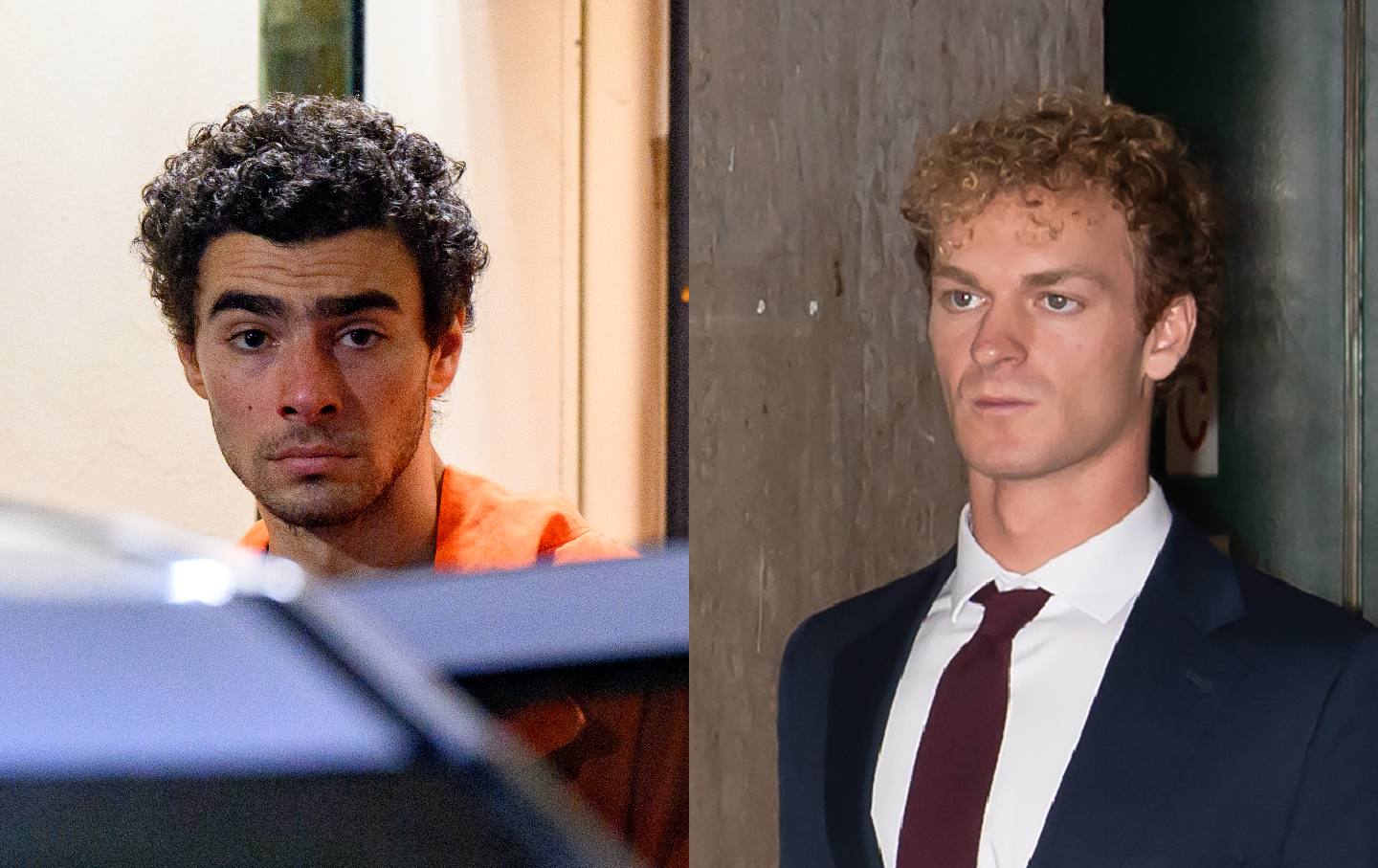
What Luigi Mangione and Daniel Penny Are Telling Us About America What Luigi Mangione and Daniel Penny Are Telling Us About America
When social structures corrode, as they are doing now, they trigger desperate deeds like Mangione’s, and rightist vigilantes like Penny.
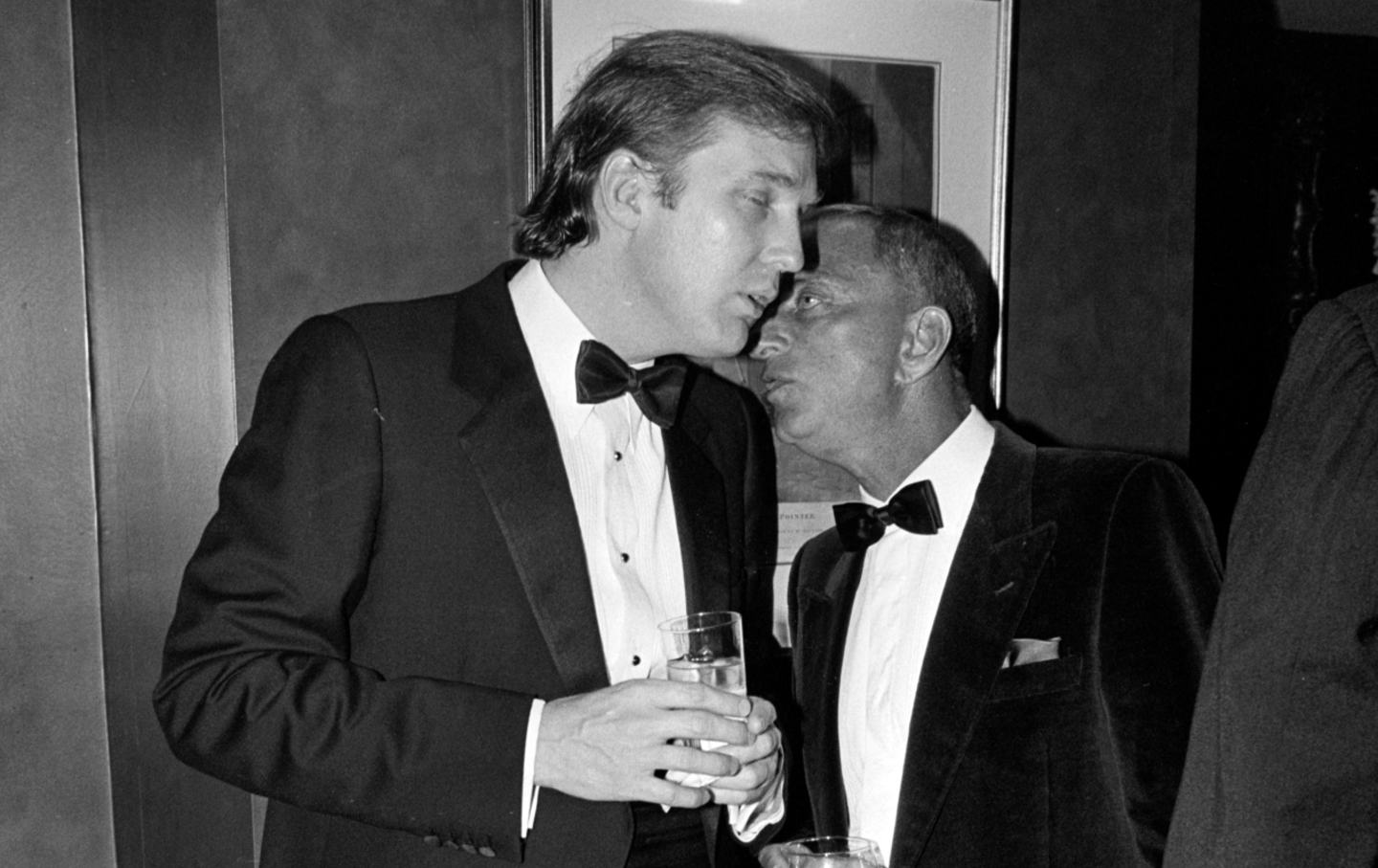
Donald Trump Is the Authentic American Berserk Donald Trump Is the Authentic American Berserk
Far from being an alien interloper, the incoming president draws from homegrown authoritarianism.
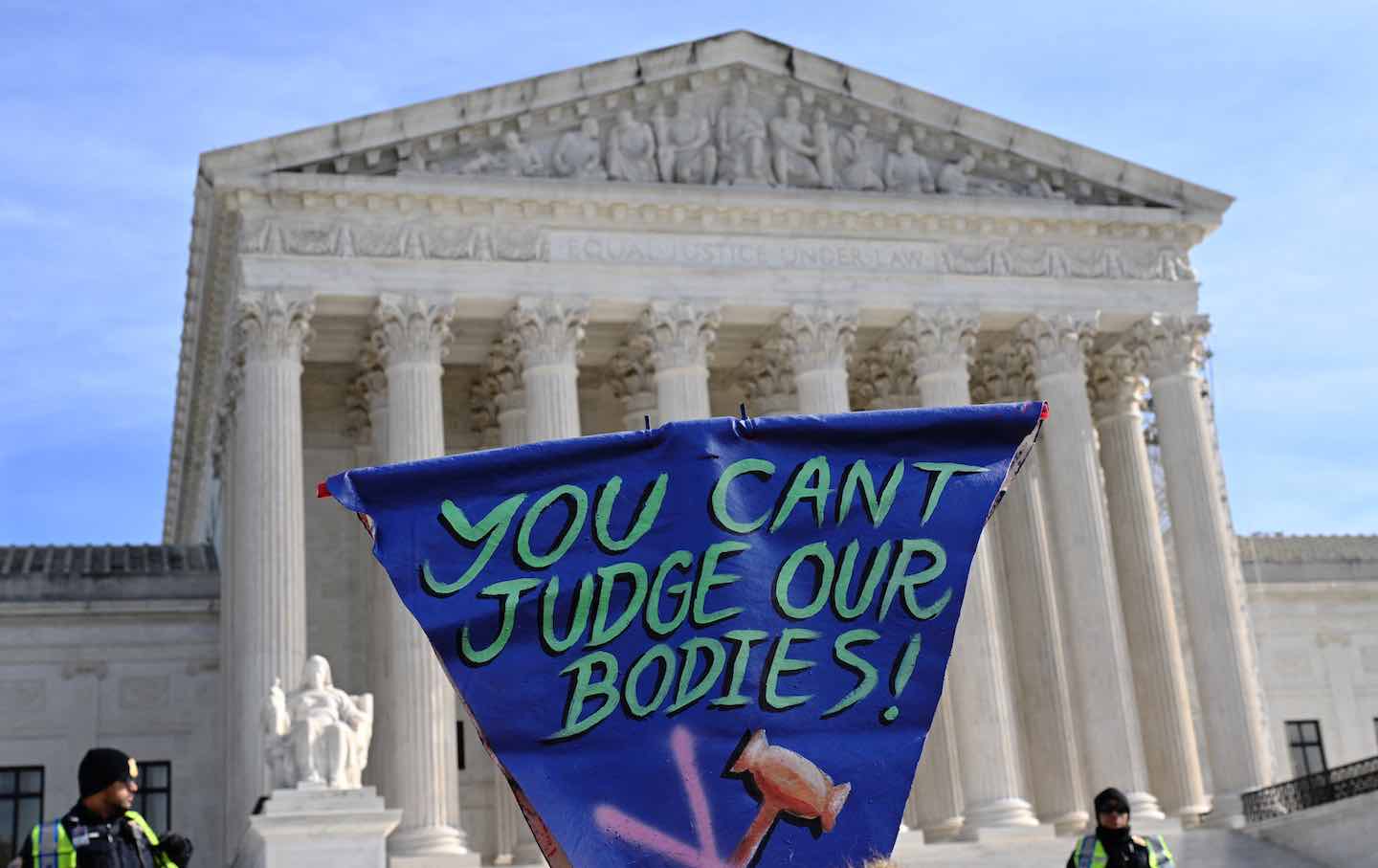
Banning Trans Health Care Puts Young People at Risk of Harm Banning Trans Health Care Puts Young People at Risk of Harm
Contrary to what conservative lawmakers argue, the Supreme Court will increase risks by upholding state bans on gender-affirming care.
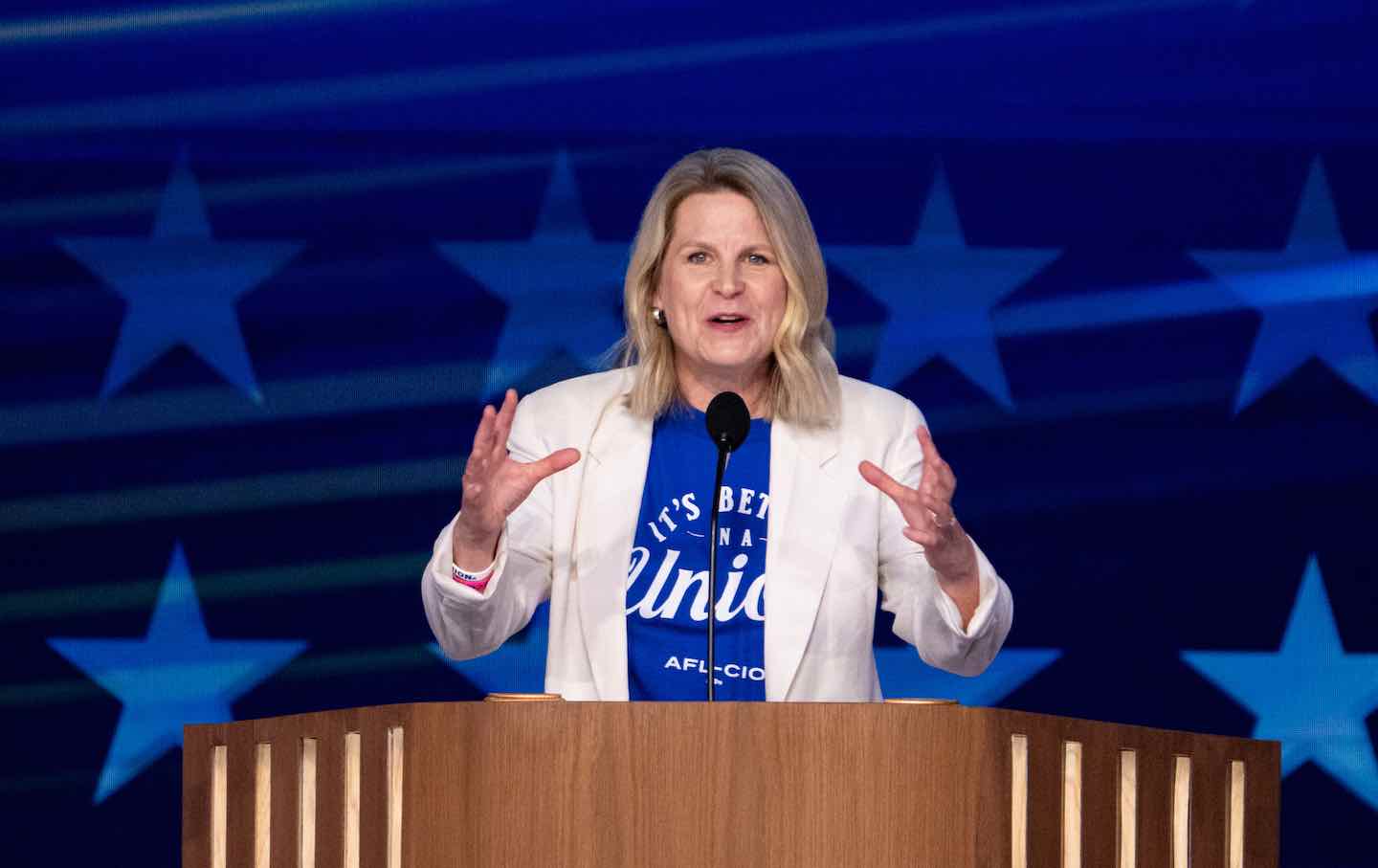
If Democrats Want to Reconnect With the Working Class, They Need to Start Listening to Unions If Democrats Want to Reconnect With the Working Class, They Need to Start Listening to Unions
The Democrats blew it with non-union workers in the 2024 election. Unions have a plan to get the party on message.

